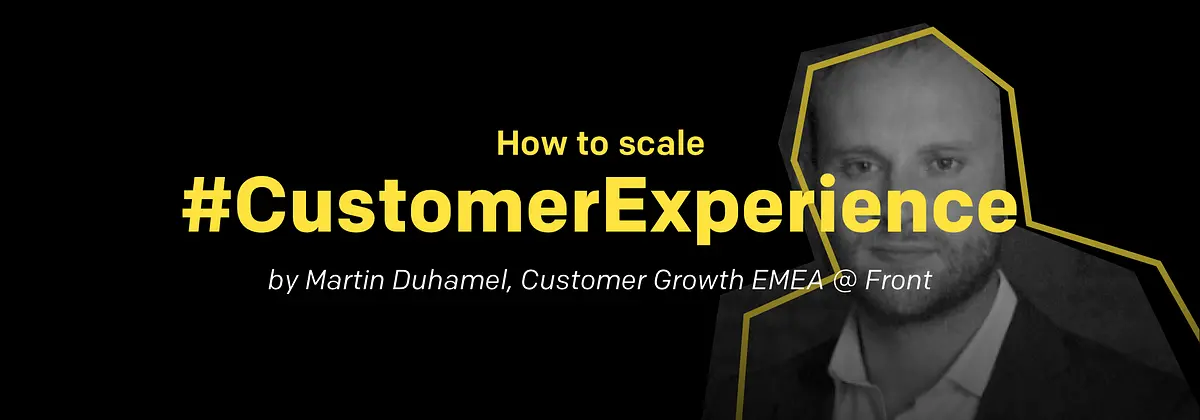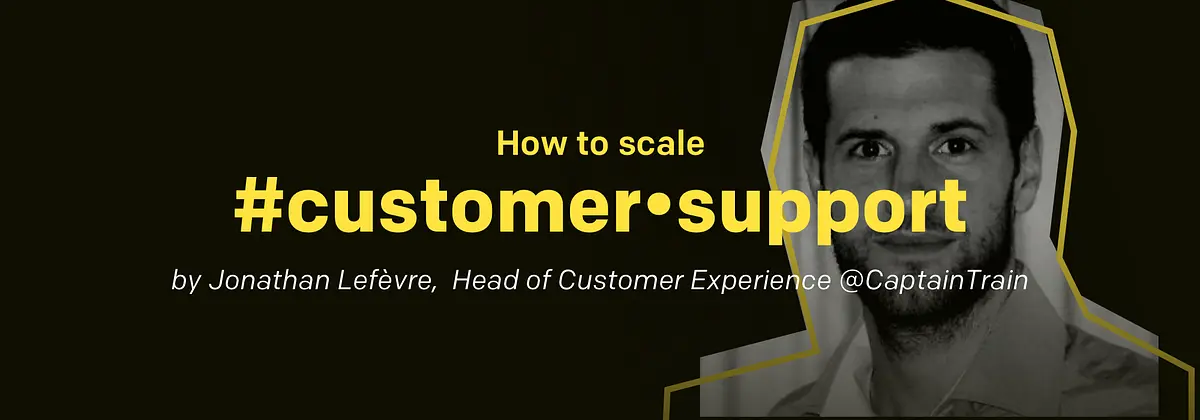This article includes key takeaways from Jonathan Lefèvre’s talk on how to scale customer support. Check out the full video on Youtube or get the latest from our Scale series.
5 key best practices
Best practice #1: Pick your channels wisely
Most startups tend to select their channels by default. By doing so, they miss an opportunity to think strategically about whether to opt for asynchronous channels (like email) or for real-time channels (like a phone number or chat). At bottom, the question comes down to the expectations you wish to set. From the start, the team headed by Jonathan at Captain Train chose to opt for email as sole channel for support. The reasons are two-fold: first, it was extremely unlikely that any support agent could answer a ticket without looking up information beforehand and second, creating expectations that could be met and exceeded by the team contributed to forging a great experience for their customers.
Note: The question of ease of access to support can also be considered part of a deliberate strategy to impact the number of tickets and the overall level of qualification of the tickets. Scaling startups tend to move along an axis from easy access and high volume of tickets towards harder access and more pertinent requests. For Jonathan, the important thing is to make this shift in a calculated, well-dosed manner.
Best practice #2: The best support is no support
The ideal you should be aiming for: making your clients 100% autonomous. Customer support should therefore be seen as a member of the product team. Their mission goes beyond closing tickets, and includes understanding what can be changed in the product to prevent the tickets they manage from recurring. The customer support team have a unique position in the company, they can — and should, according to Jonathan — make their proximity with clients fuel product improvements and close the feedback loop that is often times broken between end users and the product team.
Note: Bugs, missing features, copywriting, design, missing information, all should be impacted by the Customer Support team. To measure their impact, Jonathan suggests taking tickets vs growth as a KPI. Ideally, the increase in tickets should be less than the increase in users — a metric that shows that the team are being proactive and able to handle increased demand that come with Product-Market Fit and scaling.
Best practice #3: Product can’t solve everything
In those (few) cases where product improvements can’t address the issue, the support team can still keep a proactive stance by contributing to building the help center. Allowing customers to self-serve is effective for the team, as well as for the user who can access an immediate answer to their query. Jonathan also recommends looking into ways to contextualize your help section. For example, at Captain Train, the help section would recommend different articles according to where it was accessed from on the site and thus try to match the user’s query without them having to search.
Note: Building a help center forces you to consolidate certain answers which is incredibly helpful when onboarding new teammates. Jonathan also recommends creating an internal knowledge base (with tools like Slite) and opening it to the entire team.
Best practice #4: Promises are debts
Users expect quality service. But when you commit to answering within a set timeframe, they also come to expect speed. In most products and in most situations, there is no reason to make such a commitment as it only makes you twice as likely to deliver an unsatisfactory experience. Focus on assuring that your users receive the attention and care that they require, not the speed that they only really expect after you’ve promised it.
Best practice #5: Give yourself adequate tools
Jonathan insists on the back-office as a source of possible optimization for scaling customer support teams. It is, in his words, the support’s second home. Creating easier flows and a better interface ensures that your support team can keep delivering at scale. At Captain Train, the back was as polished as the front, and the support team had engineers they could rely on to help perfect their tools and enhance the team’s ability to cope with their growing user base. As mentioned by Jonathan, this can also be done with solutions like Forest.
3 key mindsets
Mindset #1: Bridge the gap
The gap between the user’s problems and the team in charge of solving them is the root cause of poor customer experience. It’s important that the customer experience team be viewed as the missing link between the end user and the product team to bridge that gap and close the feedback loop. In order to do so, Jonathan recommends considering the customer support team as an integral part of the product team (see best practice #2).
Mindset #2: From linear to exponential
The question of how scalable support is as a function is worth asking. For Jonathan one of the specificities of support is that, by definition, agents keep a one-on-one relationship with clients and the total amounts of tickets closed therefore increases linearly with new hires. But when a startup reaches product-market fit and the growth is exponential, support teams need to confront growth by seeking new levers to exponentialize their output. And these traditionally lie outside of the realm of customer support (product, help section, back office…). Moreover, they need a culture that recognizes the central role they play in delivering and improving customer satisfaction. Cue mindset #3…
Mindset #3: It’s all about culture
There is a natural tendency to minimize customer issues. Especially for teams that are out of touch with their problems and requests. To counter this phenomenon, Jonathan recommends putting everyone on support. At Captain Train, members from each team would book a half day during which they would join the support team and handle tickets. Doing so helped them perform better in their job (product, engineering, etc) by understanding the impact they had on the customer’s experience.
Note: To implement this, the support team had to make itself available to assist other team members when handling support tasks. It also helped the team communicate their issues to the company as a whole and create urgency on topics that were essential to improving customer satisfaction.
Subscribe to be notified of the latest Scale talks.
References:
Net Promoter Score Considered Harmful (and What UX Professionals Can Do About It), Jared M. Spool
Les bienfaits du service client par e-mail, Jonathan Lefèvre
Merci Alfred, Jonathan Lefèvre
Slides:
About Jonathan Lefèvre:
Jonathan’s obsession with excellence in customer service led to the rapid growth of Captain Train, where he was Head of Customer Experience. Setting out processes to scale their operations throughout the company’s rapid growth, Jonathan shares his insights on how to instil a culture of over-delivering for customers and successfully growing that culture into a pillar of any company. He is also the founder of Clearwage, an opinionated HR tool to help you manage your compensation framework. Follow Jonathan on Twitter.


%20(2).png)
